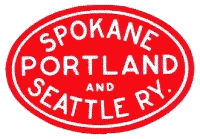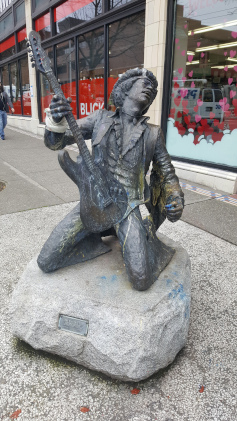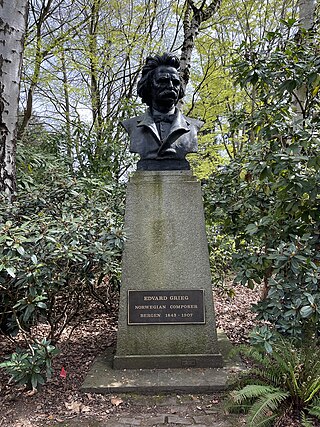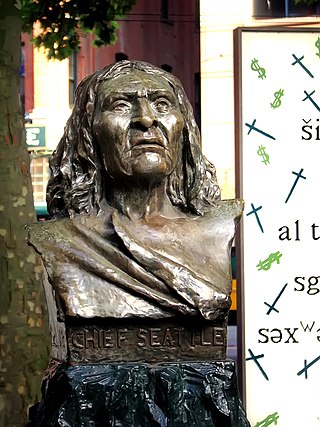
James Jerome Hill was a Canadian-American railroad director. He was the chief executive officer of a family of lines headed by the Great Northern Railway, which served a substantial area of the Upper Midwest, the northern Great Plains, and Pacific Northwest. Because of the size of this region and the economic dominance exerted by the Hill lines, Hill became known during his lifetime as "The Empire Builder", and died in 1916 with a fortune of about 63 million dollars. His former home, James J. Hill House, is now a museum in Saint Paul, Minnesota.

The Great Northern Railway was an American Class I railroad. Running from Saint Paul, Minnesota, to Seattle, Washington, it was the creation of 19th-century railroad entrepreneur James J. Hill and was developed from the Saint Paul & Pacific Railroad. The Great Northern's route was the northernmost transcontinental railroad route in the U.S.

Gonzaga University (GU) is a private Jesuit university in Spokane, Washington. It is accredited by the Northwest Commission on Colleges and Universities. Founded in 1887 by Joseph Cataldo, an Italian-born priest and Jesuit missionary, the university is named after the young Jesuit saint Aloysius Gonzaga. The campus houses 105 buildings on 152 acres of grassland alongside the Spokane River, in a residential setting a half-mile (800 m) from downtown Spokane.

Seattle Pacific University (SPU) is a private Christian university in Seattle, Washington. It was founded in 1891 in conjunction with the Oregon and Washington Conference of the Free Methodist Church as the Seattle Seminary. It became the Seattle Seminary and College in 1913, adopting the name Seattle Pacific College two years later, and received its current name in 1977.

The Alaska–Yukon–Pacific Exposition, acronym AYP or AYPE, was a world's fair held in Seattle in 1909 publicizing the development of the Pacific Northwest. It was originally planned for 1907 to mark the 10th anniversary of the Klondike Gold Rush, but the organizers learned of the Jamestown Exposition being held that same year and rescheduled.

The Empire Builder is a daily long-distance passenger train operated by Amtrak between Chicago and either Seattle or Portland via two sections west of Spokane. Introduced in 1929, it was the flagship passenger train of the Great Northern Railway and was retained by Amtrak when it took over intercity rail service in 1971.

The Burke Museum of Natural History and Culture is a natural history museum on the campus of the University of Washington, in Seattle, Washington, United States. It is administered by the UW College of Arts and Sciences. Established in 1899 as the Washington State Museum, the museum traces its origins to a high school naturalist club formed in 1879. The museum is the oldest in Washington state and boasts a collection of more than 16 million artifacts, including the world's largest collection of spread bird wings. The Burke Museum is the official state museum of Washington.

State Route 513 (SR 513) is a 3.35-mile-long (5.39 km) state highway in the U.S. state of Washington, located entirely within the city of Seattle in King County. The highway travels north as Montlake Boulevard from an interchange with SR 520 and over the Montlake Bridge to the University of Washington campus in the University District. SR 513 continues past University Village before it turns northeast onto Sand Point Way and ends at the entrance to Magnuson Park in the Sand Point neighborhood.

The Spokane, Portland & Seattle Railway was a railroad in the northwest United States. Incorporated in 1905, it was a joint venture by the Great Northern Railway and the Northern Pacific Railway to build a railroad along the north bank of the Columbia River. The railroad later built or acquired other routes in Oregon. The SP&S was merged into the Burlington Northern in March, 1970. Remnants of the line are currently operated by BNSF Railway and the Portland and Western Railroad.

Charles Henry Niehaus was an American sculptor.

The University of Washington School of Medicine is the medical school of the University of Washington, a public research university in Seattle, Washington. According to U.S. News & World Report's 2022 Best Graduate School rankings, University of Washington School of Medicine ranked #1 in the nation for primary care education, and #7 for research.

The Pacific Northwest Corridor or the Pacific Northwest Rail Corridor is one of eleven federally designated higher-speed rail corridors in the United States and Canada. The 466-mile (750 km) corridor extends from Eugene, Oregon, to Vancouver, British Columbia, via Portland, Oregon; and Seattle, Washington, in the Pacific Northwest region. It was designated a high-speed rail corridor on October 20, 1992, as the one of five high-speed corridors in the Intermodal Surface Transportation Efficiency Act of 1991 (ISTEA).

Bassetti Architects is an architectural firm based in Seattle, Washington with a second office in Portland, Oregon. Founded in 1947, the firm has newly designed or substantially renovated several well-known Seattle landmarks and many schools in the greater Seattle-Tacoma area. This includes several buildings at the Pike Place Market, the Jackson Federal Building, Seattle City Hall, the Seattle Aquarium, Franklin High School, Raisbeck Aviation High School, Roosevelt High School, and Stadium High School. The firm's work has been awarded local, national, and international awards.
James Herbert FitzGerald (1910–1973) was an American sculptor from Seattle, Washington. He received a degree in architecture at University of Washington and worked at Spokane Art Center. He has been called "[one] of the Pacific Northwest's preeminent artists of [his] period", and "among the most innovative modern artists active in the Pacific Northwest."

A life-size bronze sculpture of Jimi Hendrix by Daryl Smith, called The Electric Lady Studio Guitar, is installed at the intersection of Broadway and Pine Street in the Capitol Hill neighborhood of Seattle, Washington, in the United States.

Drumheller Fountain is an outdoor fountain on the University of Washington campus in Seattle, Washington, in the United States. The fountain was given its name in 1961 to honor the University Regent Joseph Drumheller, who gifted the central fountain machinery to the University for its centennial celebration.

A bronze bust of Edvard Grieg by Finn Frolich is installed in Grieg Garden on the University of Washington campus in Seattle's University District, in the U.S. state of Washington.

Chief of the Suquamish – Chief Seattle, also known as Bust of Chief Seattle and Chief Seattle Fountain, is a bust depicting Chief Seattle by artist James A. Wehn. It was commissioned by the Seattle Park Board to accommodate the Alaska-Yukon-Pacific Exposition, and initially sat on a fountain for men, dogs and horses.

Osteria la Spiga is a Black-owned Italian restaurant on Seattle's Capitol Hill, in the U.S. state of Washington. Sabrina Tinsley is the chef and a co-owner with Pietro Borghesi. Established in 1998, the business specializes in foods from Northern Italy, specifically Bologna and Parma. The menu has included antipasti, pastas, soups, salads, and a tiramisu based on a family recipe. Osteria la Spiga has garnered a positive reception and has been deemed among Seattle's best Italian restaurants and Capitol Hill's best eateries. Tinsley opened nearby La Dispensa in 2022.



















